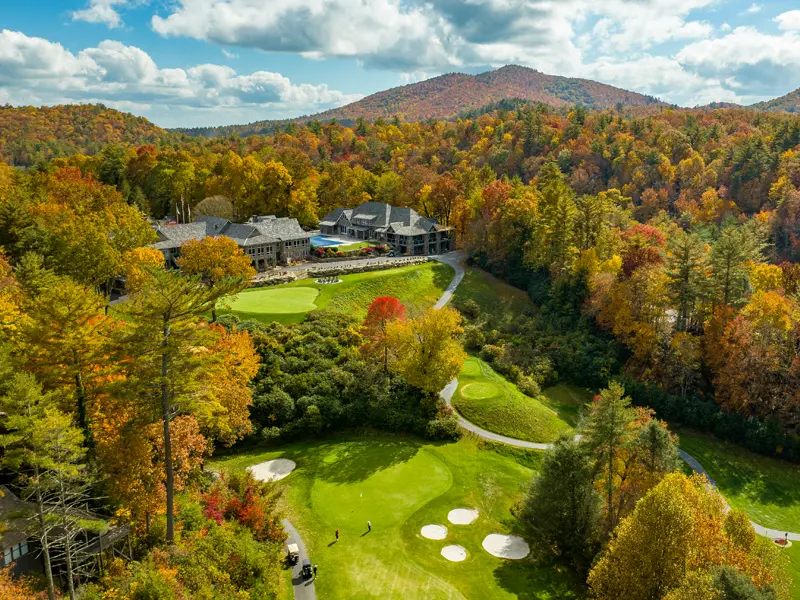Buying Into a Private Golf Club Community: What You Should Know

Joining a private golf club is more than securing access to great fairways—it’s a lifestyle decision that affects your daily rhythm, your family dynamic, and often, your long-term investment strategy. Whether you’re seeking a new club to call home or exploring relocation options that center around golf, it’s worth evaluating what matters most to you.
Clubs like Burlingame Country Club, nestled in the serene and scenic Blue Ridge Mountains of North Carolina, offer a compelling example of what’s possible when golf, community, and mountain living come together.
So how do you decide if a club like Burlingame—or any private golf community—is the right fit for you? Start with these ten essential considerations.

Is the Club Built for Your Lifestyle?
If you’re a single golfer focused on course quality and competitive play, your priorities will look different than someone seeking a full-family club with social events, fitness amenities, and youth programs. Don’t just tour the clubhouse—ask how the club supports your lifestyle.
What Amenities Beyond Golf Matter to You?
Modern private clubs are about more than just 18 holes. Consider whether you’ll use:
- Tennis and pickleball courts
- Pools and wellness centers
- Dining venues for both casual and formal meals
- Kids’ camps and holiday events
- Social or wine clubs
- Business and event hosting spaces
Make sure the club offers a well-rounded experience that fits how you actually live and spend your leisure time.
What Type of Membership Access Is Offered?
Understanding how privileges are structured is key—especially for couples and families. Some clubs designate only one household member as a full member, limiting the other’s access to golf or dining. Others offer tiered junior programs or specific age-related usage policies. Ask how your homeownership impacts your access and if extended family or guests can enjoy privileges when visiting.
How Important Is Game Improvement to You?
For passionate golfers, instruction and practice facilities are non-negotiable. Look for:
- A spacious driving range with grass tees
- Short game practice areas and bunkers
- PGA-certified instructors available for lessons
- Golf simulators or indoor tech for year-round training
Ask about the teaching philosophy and whether there’s support for beginners, juniors, or advanced players looking to shave strokes.
What’s the Club Ownership Model?
Private clubs are generally either equity (member-owned) or corporate-owned. With equity clubs, members shape the vision, budgeting, and experience. You’ll likely have more say in club decisions—and a sense of shared ownership and community investment.
Corporate clubs often offer convenience and streamlined operations, but with less member input and potentially greater variability in long-term plans or dues structures. Decide which approach aligns better with your expectations for involvement and control.
What Are the Real Financial Commitments?
It’s not just about initiation fees and monthly dues. Be sure to ask about:
- Capital improvement assessments
- Cart and caddie fees
- Food and beverage minimums
- Locker and storage fees
- Guest policies and associated costs
Ask for a full cost breakdown and compare it with your usage habits to make sure it’s a fit for your lifestyle and budget.
What’s the Long-Term Vision for the Club?
Ask leadership what’s on the horizon. Are new facilities in the works? Is there a master plan for updates or expansions? You want to know if you’ll be walking into a well-maintained club—or a series of assessments.
How Does the Membership Process Work?
Some clubs are easy to join with minimal process. Others require formal applications, referrals, interviews—or even a vote. If you’re exploring through a vacation rental or extended visit, check whether that gives you access to preview the club’s amenities and engage with current members.
What’s the Vibe from Current Members?
Spend time with the people who know the club best. Ask current or former members about:
- Club culture and friendliness
- Responsiveness of leadership
- Whether promises made during onboarding were kept
- How involved the community is in shaping the club’s direction
A candid conversation will reveal more than any brochure.
It’s the Little Things
The quality of a private club often comes down to details: service, maintenance, management, and culture. Are staff members warm and consistent? Is the property meticulously cared for? Does the general manager know members by name?
At a well-run private golf club community, those details are more than finishing touches—they’re part of the experience.
See More: The Rise of Croquet: A Sport for Everyone
Spotlight: Burlingame Country Club
Located in the scenic town of Sapphire in North Carolina’s Blue Ridge Mountains, Burlingame Country Club is a private, member-owned club community set on 1,450 pristine acres. The club offers a variety of luxury real estate options—including cottages, villas, condos, and custom homes. Membership is typically tied to homeownership, providing a strong sense of investment and connection among residents.
While Burlingame does not offer short-term accommodations, vacation rentals within the community are available for those looking to experience the lifestyle before making a purchase. Certain amenities may remain reserved for full members, preserving the exclusivity and value of the club.

Final Word: Live the Club Life—Fully
Choosing a private golf club community isn’t a one-size-fits-all decision. It’s about finding a community that aligns with your lifestyle, your values, and your vision for the future.
If you’re exploring a move to North Carolina’s Blue Ridge Mountains and looking for a private club that offers more than just exceptional golf, Burlingame Country Club should be on your list. With its luxury real estate offerings, close-knit member community, and natural beauty, it’s more than a golf club—it’s a place to live, connect, and belong. Click here to learn more.



